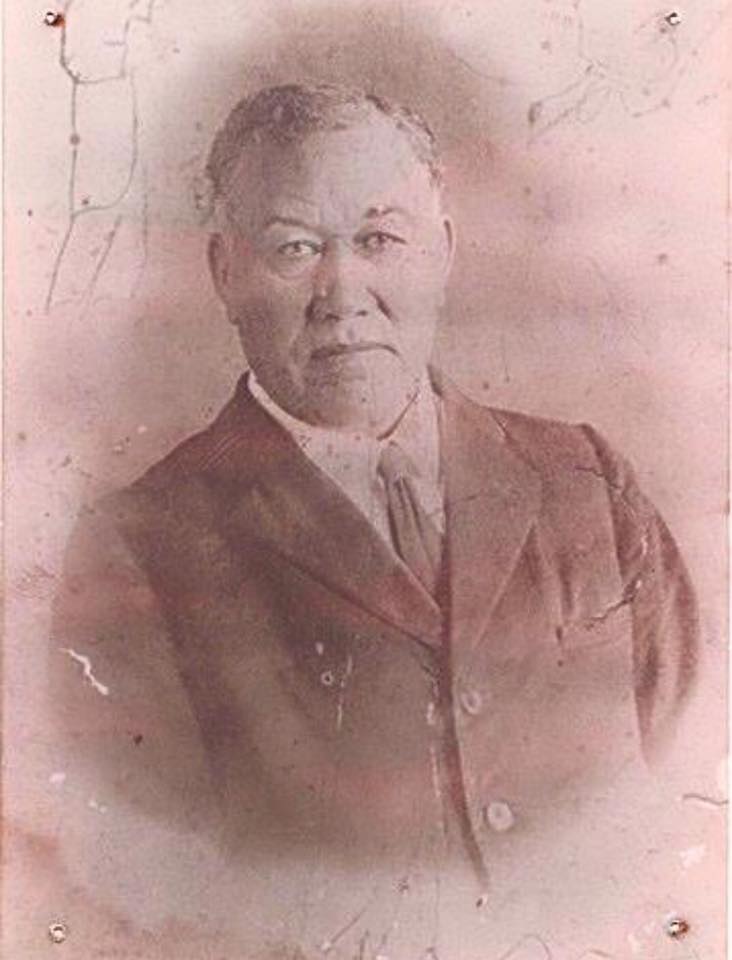
The story behind the Cherry Street
African Methodist Episcopal Church in Dothan, Alabama plays out like
a classic drama of good versus evil; might versus right. Today it's
a classic red brick church; the oldest in Dothan and recognized as
the "Mother Church of the A.M.E. Denomination in Alabama."
It wasn't always like that. The church began in
the mid-1800s as Colored Methodist Church. Rev. Pryor, the first pastor,
had a small wooden structure built in 1877 on land donated
by Ms. Elvira Guilford, a Black Dothan landowner and changed the
name to Gaines Chapel. Its rise from an
obscure chapel to a Dothan historic landmark is due mainly to the
efforts of one man, the second pastor, Rev. Hightower.
 |
 |
| Historic Marker for church | Cornerstone of church |
Rev. William Jefferson Hightower probably
never thought of himself as a civil rights pioneer but without him,
this historic church would not stand in the heart of Dothan today.
I visited the church and met Cheryl
Whiting, church historian, and Francina Morales, longtime church
member and church musician to learn about the church history. They
told of the building of the church and how it once faced a side
street and when the new church was built, it was turned to face the
newly named Cherry St.
 |
| Cheryl and Francina are proud to show off the interior of Cherry St. A.M.E. Church |
Francina told of her mother going to
Selma for the marches. She told of Rev. Billings acquired the
Hammond organ which was a big deal for a Black church. The pipes are
still in the church today. They both told of the church being built
brick by brick. Rev. Hightower raised the money to build a new church but when he approached the
city's only brickyard owner, he refused to sell them to a Black man.
They put me in touch with James Morgan,
III, Rev. Hightower's great great great grandson, who was very
helpful in giving me information. According to Mr. Morgan, his great
great great grandfather was born on January 12, 1868, the child of a
white father and a Black mother. He was raised shuttled back and
forth between both families. His white father did see that young
William Hightower received an education; not always easy for a Black
child in that era.
It was in about 1903 that Rev. Hightower
became pastor of what was then Gaines Chapel A.M.E. Church in
Dothan. He saw the need for a more sturdy church and with his
congregation raised $8000. When the brickyard owner refused to sell
him the bricks, Rev, Hightower was undaunted. According to Mr.
Morgan, "He initiated a plan whereby members of all ages in
the Black community began to ‘liberate' bricks from white work sites
and abandoned buildings until enough had been gathered together to
start to build."
 |
| Rev. Hightower photo courtesy of James Morgan III |
Francine's grandmother was one of the
girls who gathered bricks. Today, the story is honored by a mural
commemorating the Cherry St. AME Church. (See
mural story here)Today, the church stands tall and proud as a
monument to a man who would not give up.
Cherry Street AME Church was never the
site of any significant marches or protests in the 1960s but it
helped form the character of at least one significant activist in
the Civil Rights movement. According to an article in Selma Times
Journal, Bishop Isaiah Hamilton Bonner, prelate of AME churches in
Alabama, directed Rev. P.H. Lewis, pastor of Brown Chapel A.M.E.
Church to defy the injunction. According to Bonner's son-in-law, Jim
Stallings who was an eyewitness to the conversation this is what
happened. Bonner, on being told that there was an injunction
against any church opening its doors to the Civil Rights workers,
replied "What? Lewis, ain't no white man is going to tell me who to
let use that church, that church was built by black folk, for black
folk. I am paid by the African Methodist Church, not the federal
government. Lewis, you open up those doors."
Bishop Bonner had served as pastor at
Cherry Street AME Church from 1926 to 1929. It's easy to see who he
learned from. Although the phrase "Civil Rights Movement" had not
been formed in his time, Rev. Hightower helped build the foundations
of the Civil Rights Movement one brick at a time.







